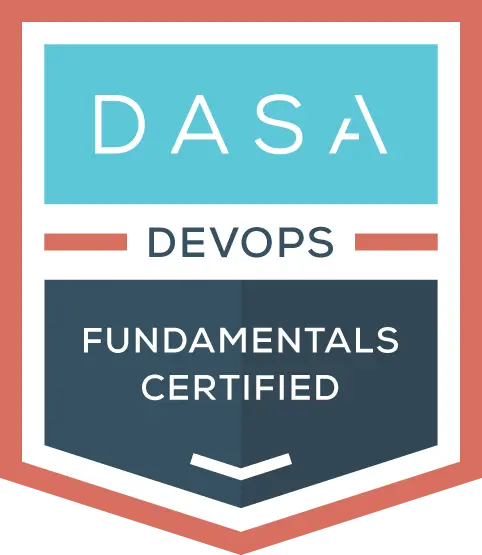Organizations are constantly seeking ways to enhance efficiency, collaboration, and service delivery. Integrating IT Service Management (ITSM) frameworks like ITIL with Agile methodologies for DevOps teams is a promising strategy that can bridge gaps, streamline processes, and foster a culture of continuous improvement. This article delves into the myths surrounding ITIL and Agile, explores integration principles, and offers practical insights on how organizations of various sizes can benefit from this approach.
Dispelling Myths: ITIL and Agile
ITIL Myths
While some organizations view ITIL as rigid, it is actually designed to be flexible and adaptable. By focusing on continuous improvement and incorporating feedback, ITIL can streamline processes, making them more efficient and less bureaucratic. Though often associated with large IT companies, ITIL is also beneficial for small and medium-sized enterprises. For example, initial processes can be as simple as tracking services in an Excel sheet or managing incidents with a minimal scope.
The belief that ITIL is expensive is another misconception. Implementation can be cost-effective by prioritizing investments in training and people, rather than opting for costly solutions. ITIL can be tailored to fit the budget constraints of smaller organizations. Additionally, ITIL is far from obsolete. The framework continues to evolve, with ITIL 4 embracing Agile principles and regularly updating to keep pace with technological advancements, making it more adaptable than ever.
DevOps Myths
While automation is a key aspect of DevOps, its primary focus is on fostering a collaborative culture and mindset. DevOps is about bringing people together as one team to drive continuous improvement, not just automating tasks. Although commonly associated with tech companies, DevOps principles can be applied in organizations of all sizes and across industries, improving efficiency and collaboration in various sectors.
Contrary to the belief that DevOps eliminates IT operations, it actually integrates IT operations into the development process. This strengthens and enhances the effectiveness of operations teams rather than making them redundant. However, DevOps cannot be implemented overnight. It requires a significant cultural shift, where teams take time to embrace collaboration, continuous improvement, and a shared sense of responsibility.
Integrating ITIL and Agile for DevOps Teams
Breaking the Wall: Common Ground
To successfully integrate ITIL and Agile methodologies, it is essential to focus on efficiency and continuous improvement. Both methodologies aim to streamline processes, enhance service delivery, and foster a collaborative culture. This can be summed up in some practical integration strategies:
Enriching Change Management with Agility
To enhance change management, it’s important to classify changes based on risk, identifying standard changes that require minimal or no approval for faster deployment. Automating these low-risk, standard changes through integration with CI/CD pipelines further expedites the process. Empowering specific roles with the authority to push changes balances speed with control, ensuring efficient decision-making. Additionally, monitoring the production environment to utilize dynamic change windows allows for the implementation of changes during optimal times, minimizing disruptions to services.
Enhancing Incident and Problem Management
Incident and problem management can be improved by focusing on early detection and collaboration. Integrating tools for early incident detection helps reduce the time from service impact to resolution. Engaging cross-functional response team – with representatives from both development and operations – fosters a collaborative approach to incident management. Clear and dynamic escalation paths ensure that the right teams and leadership are swiftly involved when needed. Lastly, leveraging data analytics and machine learning enables proactive problem management by predicting and preventing incidents before they occur, shifting from a reactive to a preventative approach.
Making ITSM and ITIL More Agile
To make ITSM and ITIL more Agile, organizations should embrace the following principles:
- Individuals and Interactions Over Processes and Tools: Foster a culture where immediate functional experts can address incidents swiftly, avoiding rigid, siloed workflows.
- Working Software Over Comprehensive Documentation: Streamline change management processes to focus on business risks and opportunities, reducing unnecessary documentation.
- Customer Collaboration Over Contract Negotiation: Shift focus from rigid SLAs to collaborative efforts that prioritize customer satisfaction.
- Responding to Change Over Following a Plan: Implement flexible change schedules that balance production stability with the ability to respond to market challenges and business growth opportunities.
ITIL’s Evolution and The Expansion of DevOps
ITIL continues to develop, incorporating Agile and Lean practices. Future iterations will likely leverage AI, machine learning, and IoT to enhance service management, making ITIL more practical and customer-focused.
DevOps is expanding beyond IT to other business areas, driven by advancements in automation and security. The adoption of sophisticated toolchains and increased emphasis on security will continue to shape the future of DevOps.
By integrating ITIL and Agile methodologies, organizations can enhance their DevOps practices, achieving greater efficiency, collaboration, and service delivery excellence. This approach not only improves current operations but also prepares organizations for future technological advancements and market demands.


DASA DevOps Certification Program
DASA DevOps Certification Program equips you with the foundational skills to understand and implement key DevOps principles. You’ll learn how to foster collaboration across teams, streamline workflows, and accelerate delivery cycles—all while ensuring your organization is prepared for long-term digital transformation.
